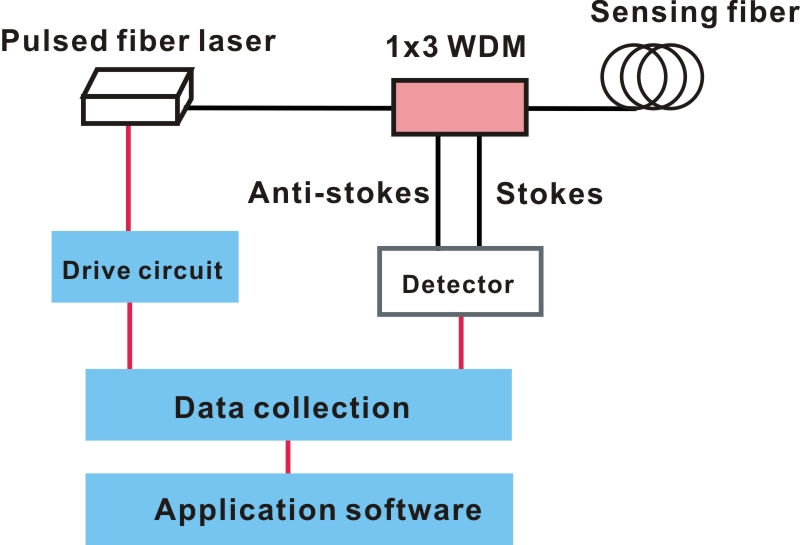Distributed Temperature Sensing Applications
Distributed Temperature Sensing System (DTS) uses light as a carrier of temperature information, uses optical fiber as a medium for transmitting temperature information, and obtains temperature distribution at various points on the fiber. In addition, optical time domain reflectometry (OTDR) is used. To obtain spatial temperature distribution information.
In the distributed system, the optical fiber is both a sensing medium and a measured transmission medium, so the sensing part has a simple structure; compared with the point sensor, the information acquisition cost per unit length is greatly reduced, and the cost performance is high; and the outstanding advantage is that Continuous sensing is possible over a large spatial range. Combined with the inherent characteristics of optical fiber, such as high temperature and high pressure resistance, corrosion resistance, lightning strike resistance, tolerance to complex and harsh conditions, resistance to radio frequency and electromagnetic interference, small size, light weight, etc., distributed optical fiber temperature measurement system is very applicable and widely used. .
Typical applications for distributed fiber optic temperature measurement systems include:
- Temperature detection of oil field natural gas shaft
- High voltage cable temperature monitoring
- Temperature monitoring of large transformers
- Leakage monitoring of various pipelines (natural gas, oil, etc.)
- Building fire monitoring
- Temperature monitoring of key equipment and production processes in large factories
- Tunnel fire monitoring
- Dam leakage and temperature monitoring
Working principle
The distributed optical fiber temperature sensor is a scattering type optical fiber sensor, and the backscattered light received by the optical pulse includes Rayleigh scattering, Raman scattering, and Brillouin scattering light. Therefore, the scattering type optical fiber sensor includes an OTDR using Rayleigh scattering, and utilizes Brillouin scattering B-OTDR, B-OTDA (Brillouin Optical Time-Domain Analysis, B-OTDA) and R-OTDR using Raman scattering.

Figure 1: Schematic diagram of Distributed Temperature Sensing system
The usual DTS temperature measurement principle and positioning principle is R-OTDR, which uses Raman scattering. Its working principle is that Rahn scattering occurs in the optical fiber, and the backscattered light propagates backward to the beginning of the fiber. Each back-propagated scattered light corresponds to a scattering point on the fiber. The time and intensity information of the backscattered light is collected and analyzed to obtain the corresponding position and temperature information.
The distributed optical fiber temperature measurement system is mainly composed of three parts: temperature measurement host, temperature sensing fiber and temperature demodulation software, as shown in the following figure. The temperature measurement host is the core equipment of the system. The temperature measurement host mainly includes a laser, a 1×3 wavelength division multiplexer, an avalanche photodiode module, an amplification module, a data acquisition module and a thermostat. The working principle is that the pulsed fiber laser emits laser pulses, and back-scattering Raman scattering occurs in the optical fiber to obtain Stocks and Anti-Stocks Raman scattered light, which are respectively converted into voltage signals by avalanche photodiodes, and amplified by a high-speed AD converter. Sampling to obtain intensity information is demodulated by the temperature demodulation software to the temperature information of the entire length of the fiber.
DK Photonics offers a variety of passive components for building Distributed Temperature Sensing systems. Contact DK Photonics regarding your requirements.
Click here to download the PDF file: 


